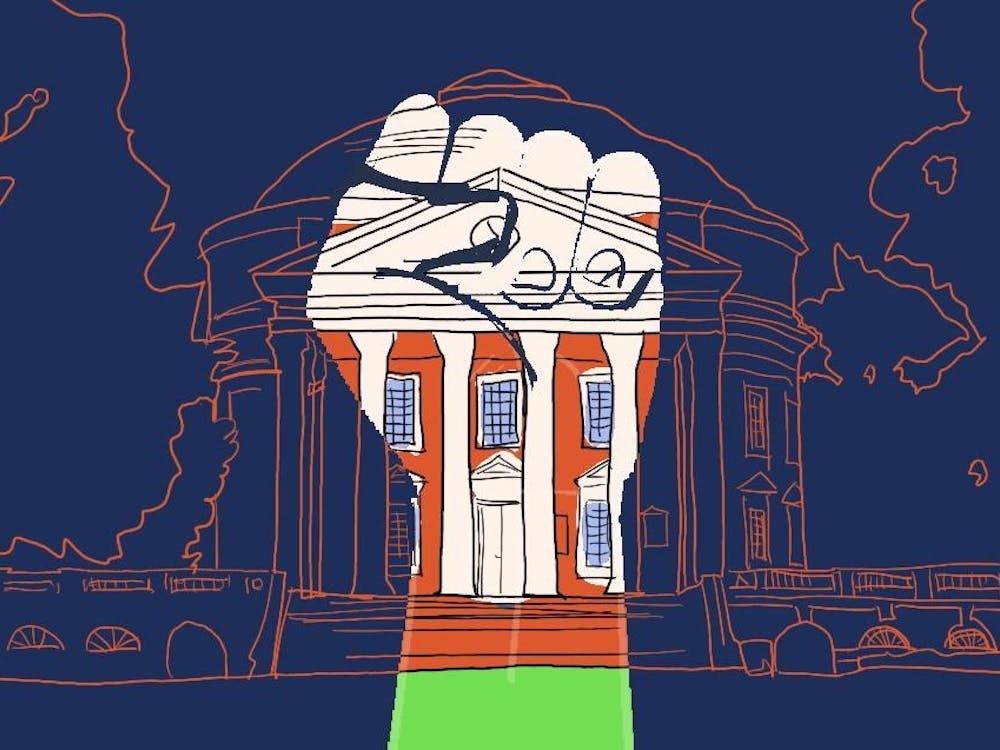Who doesn’t love reading about album reviews and movie releases? Seeing how your favorite artist’s latest creation stacks up to the opinions of the critics? Or previews of the latest art exhibit or theatre production if the finer arts are more your cup of tea? Be it the screen or stage, Grammys or galleries, the arts unite us. We all have our place in the world of arts and entertainment as producers or consumers, or both.
Within the context of The Cavalier Daily, the Arts & Entertainment section has an impressive grasp on the broad world of the content it covers with articles that reflects the seemingly limitless range of creative products which the two categories encapsulate. Yet, its scope is perhaps too broad, covering national arts news — album and movie releases — more frequently than the local — specifically Charlottesville — arts scene. There is immense potential in utilizing the outlet of arts and entertainment to bring the University and Charlottesville communities closer together with regular local coverage.
When Arts & Entertainment does cover local content, it is covered well. The section, for instance, produced exceptional coverage of the jam-packed Virginia Film Festival in October. What is lacking, however, is consistency. In the 11 articles the section has published since the start of the new year, only one focused on a local event — UPC announcing a DaBaby ticket giveaway — and even that was more University-centric than Charlottesville itself. Similarly in December, one of the nine articles published focused on a local event.
These two months of limited local coverage contrast with the previous few months where local events took up a larger share of content. November saw a jump in local coverage with nine out of 26 articles published centering on the local arts scene, from a University fashion show and an a cappella performance, to concerts at JPJ and The Jefferson. Still, local events only contributed to just over one-third of that month’s content.
In a conversation with the Arts & Entertainment editors — third-year College student Robin Schwartzkopf and second-year College student Caitlin Woodford — they shared that writers are required to write four articles over the course of a semester, at least one of which must be locally focused. Further, all writers join the team as staff writers, but in order to acquire the title of “Senior Writer,” they must contribute four articles about local arts and entertainment.
Despite these requirements, it can be difficult to get writers to cover local events. Schwartzkopf, who is at the beginning her second term in the position, summarized the challenge — they don’t have the “enforcement arm” to mandate writers cover certain events. When asked how they otherwise try to encourage writers to focus on local content, Woodford said they emphasize the learning processes and unique experiences local coverage offers.
The editors have also started pitching local events further in advance, allowing themselves to contact venues, arrange transportation and work out other logistics ahead of time. Additionally, they’re considering re-introducing columns to improve consistency of publications across the board. Columns require writers to more thoroughly plan and pitch their articles and provide regular content, usually an article every two to three weeks.
Yet, all things considered — columns, staff requirements, advance notice of events — reliable local coverage is lacking. A different approach is evidently in order. One suggestion? Beat reporting.
While more common among news reporting, a beat is a form of specialized reporting where the writer focuses their articles on a specific area or issue. Arts & Entertainment could establish a local arts beat which produces weekly content. Since the requirement for Arts & Entertainment writers is only four articles a semester, the beat could be held by multiple writers or even have a “sign up” requiring each member of the staff to cover it at least once during the semester. With a current staff of about 30 writers, there is more than enough manpower to fulfill at least one weekly article for the local arts beat.
Schwartzkopf said a central goal she and Woodford have for the semester is “community engagement.” What better way to engage the University and Charlottesville community than through the common ground of the arts — from music and film, to fashion and visual art — and achieving this through consistent, reliable local arts coverage.
A local arts beat would significantly expand the current range of the section’s content as well as increase its appeal beyond students and the University. Local coverage through an at-minimum weekly beat would enable writers to dive deeper into stories than album and movie reviews, engaging directly with the creators and providers of the arts within the community. The section could consider series within the beat, such as a four-week string of deep dives into the work of local visual artists.
Overall, the beat would expose readers to the bounty of opportunities to explore the arts at the University and within Charlottesville and provide a more nuanced level of human interest with first-hand accounts. Anyone can glance at the top hits on Spotify or read Rotten Tomatoes before seeing a new movie. What the Arts & Entertainment section is uniquely positioned to accomplish is expanding readers’ awareness of the arts that is just past their screen and in the incredible community around them.
Maggie Servais is the Public Editor for The Cavalier Daily. She can be reached at m.servais@cavalierdaily.com.







